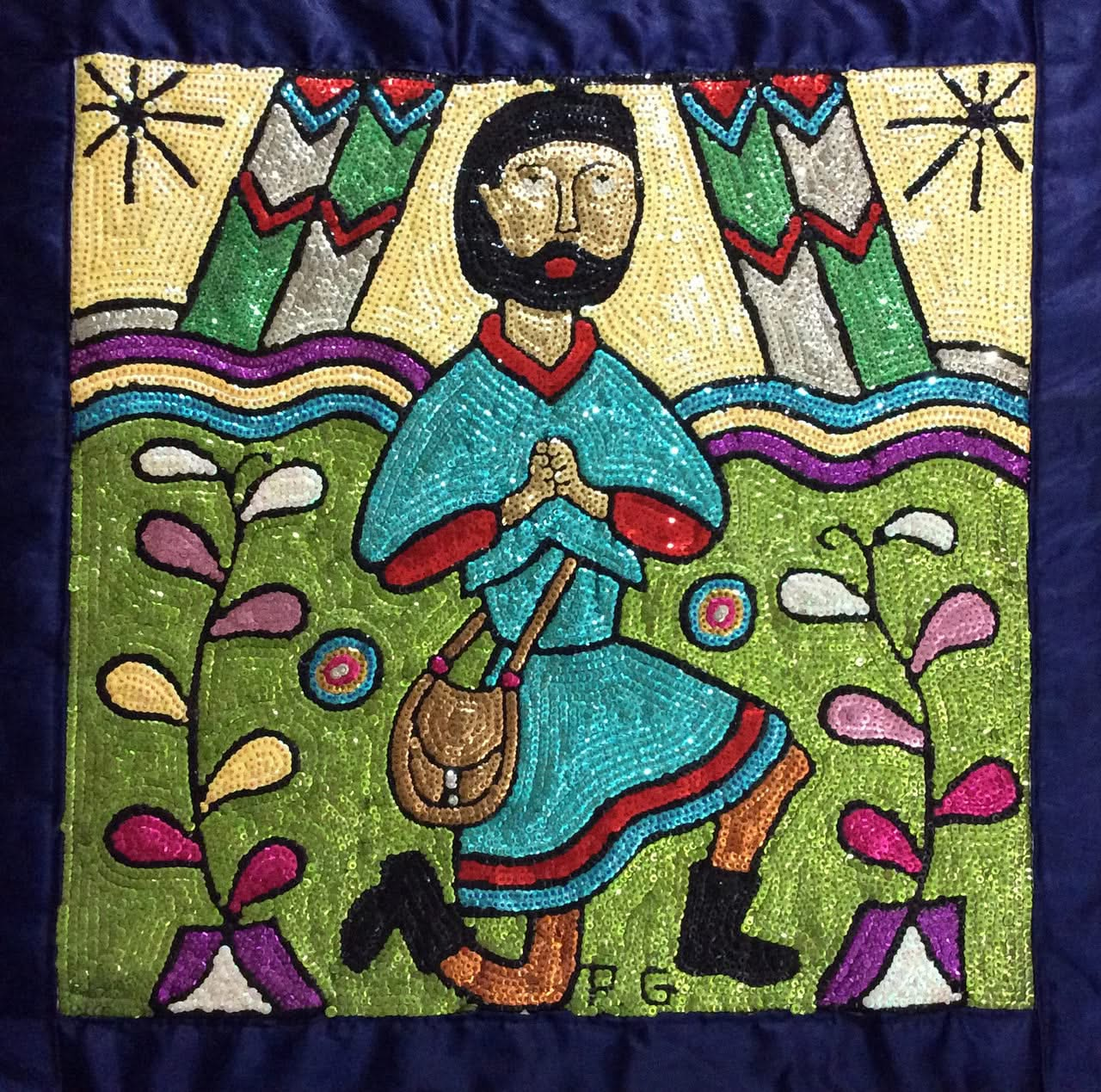1
/
of
1
Pierre Guilbert (P.G) 32"x33" Zaka Haitian Sequined and Beaded Voodoo Flag on Satin, 2017 #1MFN
Pierre Guilbert (P.G) 32"x33" Zaka Haitian Sequined and Beaded Voodoo Flag on Satin, 2017 #1MFN
ee98cfa8-f212-a714-b578-59d8ba95c152
92d2dc53-1a90-452b-a4ec-9ea65808b399
Regular price
4,701.00 kr
Regular price
Sale price
4,701.00 kr
Unit price
/
per
Taxes included.
Shipping calculated at checkout.
Couldn't load pickup availability
Description
Description
This is a Haitian voodoo flag individually sewn by hand in thousand of glimmering sequins and beads on satin. It is a 32"x33" flag that depicts the voodoo loa Zaka. Its shimmering and glistening beauty is not quite captured by the picture.
A "drapo" Vodou is a handmade flag, typically embroidered and decorated with beads and sequins. Although flags may have been made in West Africa before the arrival of Europeans, the flags widely used there by 1600 were derived from European flags. They were used as symbols of ethnic, military or religious allegiance. The drapo Vodou also drew on Yoruba beadwork, Catholic vestments and Masonic aprons. In the 19th century and early 20th century most drapo Vodou were made from one or two colored fabric pieces decorated with embroidery, metal bangles and glass beads, with an image of the lwa made of shiny fabrics appliquéd to the cloth using techniques still followed in West Africa. Flags and banners used in the 21st century in rural areas often still have stylistically simple designs, in part due to the high cost of decorative material. With the older flags the background field that frames the image was usually decorated with widely spaced sequins or beads. Modern flag makers often completely cover the fabric of the field with sparkling sequins of one color, or with intricate geometrical patterns. Borders, which were either simple or did not exist on early drapo Vodou, have evolved into highly elaborate patterns. Nowadays, ateliers are dedicated to this art craft have opened creating a vibrant market for the flags. Thousands of glimmering sequins are individually sewn by hand making this a tedious and fine task.
Azacca or Zaka: This is the loa of agriculture, but is generally seen as the brother of Ghede. For this reason Ghede will often come to the ceremonies for Zaka and come when Zaka has mounted someone. Zaka is a gentle simple peasant, but greatly respected by the peasants since he is a very hard worker. He is addressed as "cousin". He is found wherever there is country. He is usually barefoot, carries a macoute sack, wears a straw hat, and has a pipe in his mouth. By nature he is suspicious, out for profit, fond of quibbling, and has a fear and hatred of town folk. His vocal stylization consists of the almost unintelligible sounds of a goat. He is known for his gossip he spreads and for his "girl chasing." He is young and like to play when not working.
There are interesting similarities between the sophisticated Ghede and the more bumbling Azacca, as though a younger less sophisticated brother were imitating a more secure older brother. Like Ghede, Zaka loves his food. But, unlike Ghede, he is rude and voracious in his eating habits, often running away to hide with him food and eat it quickly. His favorite dishes to eat are the ones peasants feed on--boiled maize, bread soaked in oil and slices of small intestine with fatty membrane fried, unrefined sugar. His favorite drink is white rum and his tree is the avocado. Zaka controls the fields, and like the farmers themselves, he is very watchful of detail. He notes who is treating whom in what manner, who is flirting with whom, who says what to whom etc. When he mounts someone he often spills out all the local gossip to the embarrassment and amusement of all. He does not forgive easily.
It is rumored that Zaka often appears in concrete forms. In this concrete form, he assumes a limp and dresses in a ragged peasant outfit. Then he begs for rum or cassava melons. Those that refuse to give him anything are punished.
Zaka is a polygamist and considers all his children as investments. He stands for the incest taboo, though, and will not break it no matter how rich he could become. (Compilation from class assignments, Spring, 1990. Done for Bob Corbett by Jan Chatland)
About this artist
About this artist
Pierre Guilbert

ee98cfa8-f212-a714-b578-59d8ba95c152
92d2dc53-1a90-452b-a4ec-9ea65808b399









